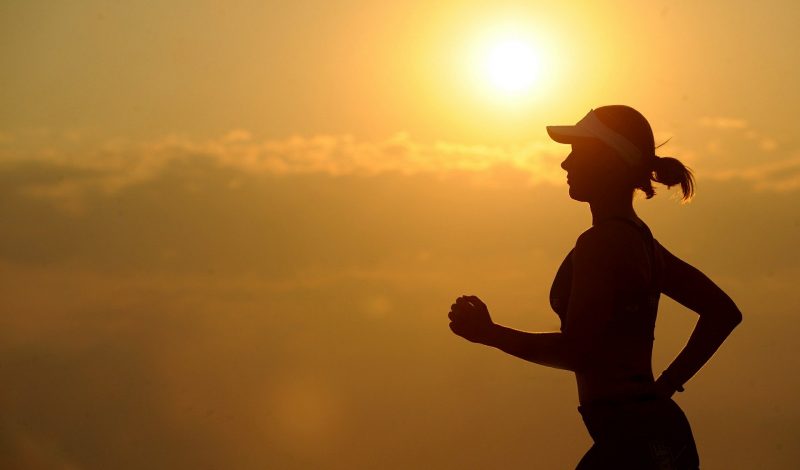Guide to Gait Analysis for Runners: Enhancing Performance and Preventing Injuries
Running is a fundamental human activity that offers numerous health benefits, from cardiovascular fitness to mental well-being. However, improper running mechanics could lead to injuries and decreased performance. This is where running gait analysis comes into play. As an experienced sports chiropractor and physiotherapist, I will guide you through the intricacies of running gait analysis, including how to perform it, common gait patterns, their implications, injury assessment, performance assessment, and the biomechanics and anatomy involved.
What is Running Gait Analysis?
Running gait analysis is a systematic evaluation of a runner’s biomechanics and movement patterns. It involves observing, measuring, and analysing various parameters such as stride length, foot strike pattern, hip and knee alignment, and overall body mechanics. The goal is to identify any abnormalities or inefficiencies that may contribute to injuries or hinder performance.
How to Perform a Running Gait Analysis
Performing a running gait analysis requires a combination of observational skills, technology, and a deep understanding of biomechanics. Here’s a step-by-step guide:
Initial Assessment
- History Taking: Begin with a thorough history of the runner, including their running experience, training regimen, previous injuries, and current complaints.
- Physical Examination: Assess the runner’s overall posture, flexibility, strength, and range of motion. Pay special attention to the lower extremities, including the hips, knees, ankles, and feet.
Video Analysis
- Setup: Use a treadmill or a flat running surface. Position cameras at multiple angles (front, side, and rear) to capture a comprehensive view of the runner’s gait.
- Recording: Record the runner at their natural pace. Ensure that the runner is warmed up to capture their typical running form.
- Playback and Analysis: Use slow-motion playback to analyse the runner’s gait frame by frame. Look for key parameters such as foot strike pattern, stride length, hip and knee alignment, and arm swing.
Biomechanical Analysis
- Foot Strike Pattern: Determine whether the runner is a heel striker, midfoot striker, or forefoot striker. Each pattern has implications for injury risk and performance.
- Stride Length and Cadence: Measure the distance covered in each stride and the number of steps taken per minute. Optimal stride length and cadence can enhance efficiency and reduce injury risk.
- Hip and Knee Alignment: Assess the alignment of the hips and knees during the stance phase. Misalignment can indicate muscle imbalances or weaknesses.
- Arm Swing and Trunk Rotation: Evaluate the runner’s arm swing and trunk rotation. Proper coordination between the upper and lower body is crucial for efficient running.
Common Gait Patterns and Their Implications
Understanding common gait patterns and their implications is essential for effective gait analysis. Here are some typical patterns:
Overstriding
- Description: The foot lands too far in front of the body, often with a heel strike.
- Implications: Overstriding increases braking forces, leading to higher impact on the joints and a greater risk of injuries such as shin splints and stress fractures.
Excessive Pronation
- Description: The foot rolls inward excessively during the stance phase.
- Implications: Excessive pronation can cause overuse injuries such as plantar fasciitis, Achilles tendinitis, and medial tibial stress syndrome.
Supination (Underpronation)
- Description: The foot rolls outward during the stance phase.
- Implications: Supination reduces the foot’s ability to absorb shock, increasing the risk of injuries like ankle sprains and iliotibial band syndrome.
Low Cadence
- Description: The runner takes fewer steps per minute, often resulting in longer strides.
- Implications: Low cadence can lead to overstriding and increased impact forces, contributing to injuries.
Injury Assessment
Running gait analysis is a valuable tool for identifying and addressing injuries. Here’s how it can help:
Identifying Injury Mechanisms
- Observation: By analysing the runner’s gait, you can identify abnormal movement patterns that may contribute to injuries. For example, excessive pronation can lead to plantar fasciitis, while overstriding can cause shin splints.
- Correlation: Correlate the observed gait abnormalities with the runner’s reported symptoms and injury history to pinpoint the underlying causes.
Preventing Future Injuries
- Correction: Use the insights gained from the gait analysis to develop a targeted intervention plan. This may include exercises to strengthen weak muscles, improve flexibility, and correct biomechanical imbalances.
- Education: Educate the runner on proper running mechanics and provide recommendations for footwear and training modifications to prevent future injuries.
Performance Assessment
Running gait analysis is not only about injury prevention but also about enhancing performance. Here’s how it can help:
Optimising Efficiency
- Stride Length and Cadence: By analysing and adjusting stride length and cadence, you can help the runner achieve a more efficient running form. Optimal cadence (typically around 180 steps per minute) reduces ground contact time and minimises energy expenditure.
- Foot Strike Pattern: Encourage a midfoot or forefoot strike to reduce braking forces and improve running economy.
Enhancing Power and Speed
- Strength and Conditioning: Identify muscle imbalances or weaknesses that may be limiting the runner’s performance. Develop a strength and conditioning program to address these issues and enhance power and speed.
- Technique Drills: Incorporate technique drills to improve running mechanics, such as high knees, butt kicks, and bounding exercises.
Biomechanics and Anatomy Involved
A thorough understanding of biomechanics and anatomy is crucial for effective running gait analysis. Here are some key concepts:
The Gait Cycle
- Stance Phase: The period when the foot is in contact with the ground. It includes initial contact, mid-stance, and toe-off.
- Swing Phase: The period when the foot is off the ground, moving forward to the next step. It includes initial swing, mid-swing, and terminal swing.
Key Muscles and Joints
- Lower Extremities: The quadriceps, hamstrings, gluteal muscles, calf muscles, and hip flexors play crucial roles in running mechanics. The hip, knee, and ankle joints are key points of movement and stability.
- Core Muscles: The core muscles, including the abdominals, obliques, and lower back muscles, provide stability and support for the spine and pelvis during running.
Biomechanical Principles
- Ground Reaction Forces: The forces exerted by the ground on the body during running. Proper alignment and muscle activation can help manage these forces and reduce injury risk.
- Kinetic Chain: The interconnected system of muscles, joints, and bones that work together to produce movement. Dysfunction in one part of the kinetic chain can affect the entire system.
Conclusion
Running gait analysis is a powerful tool for enhancing performance and preventing injuries. By understanding the biomechanics and anatomy involved, identifying common gait patterns, and performing a thorough analysis, you can provide valuable insights and interventions for runners of all levels. Whether you are a seasoned athlete or a novice runner, incorporating running gait analysis into your training regimen can help you achieve your goals and enjoy a healthier, more efficient running experience.
For more information give the clinic a call on 01242 254000 to speak to one of our expert professionals.



